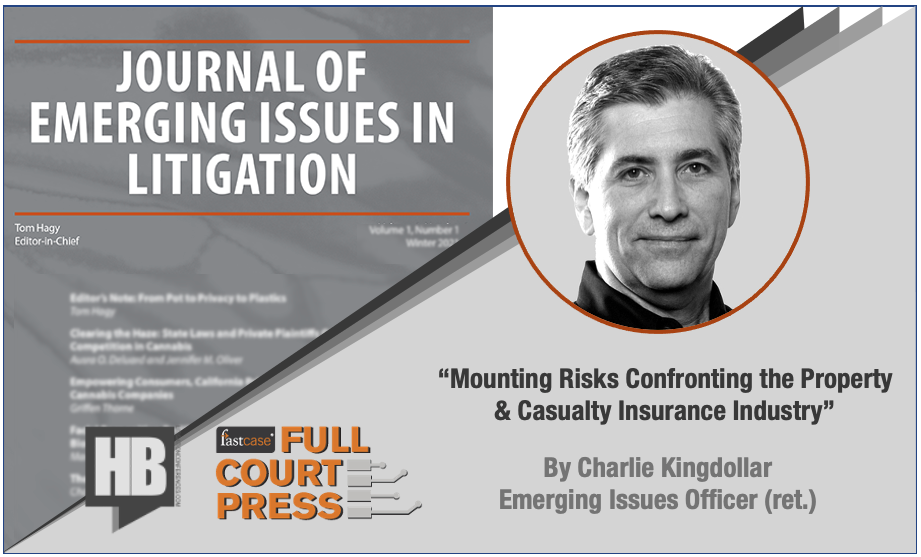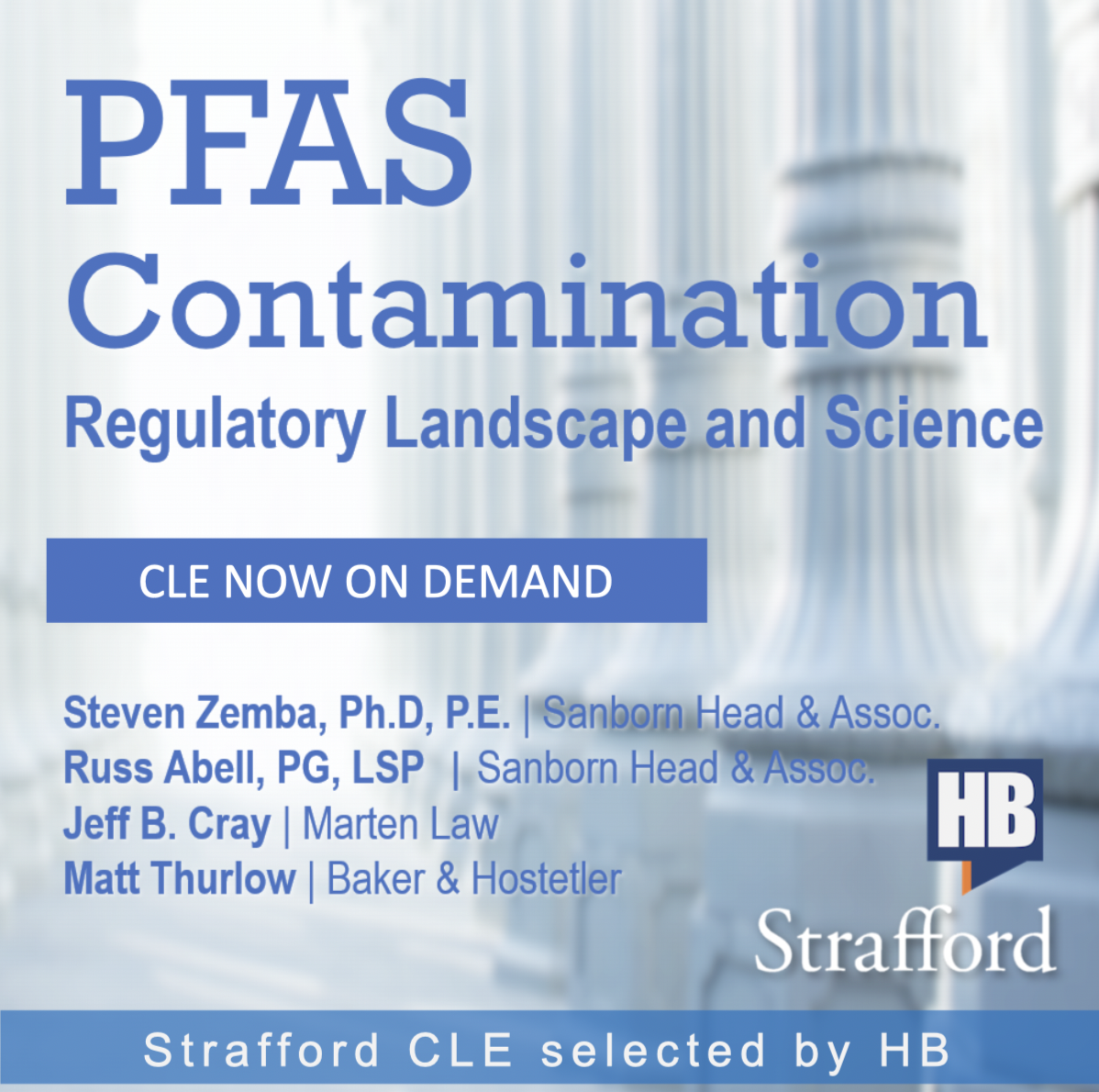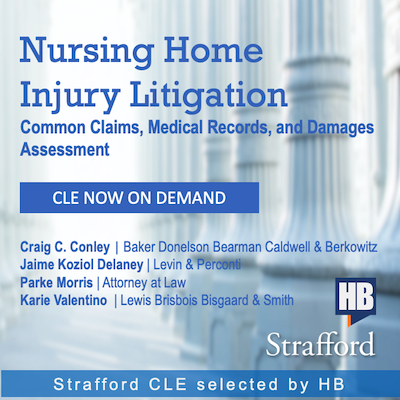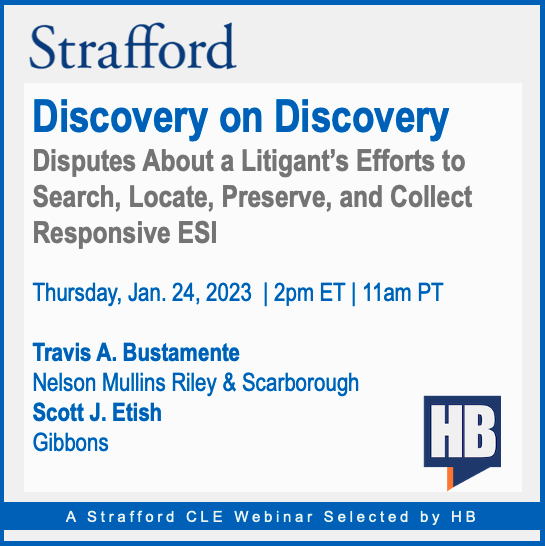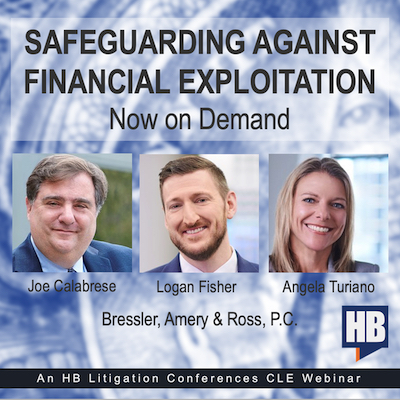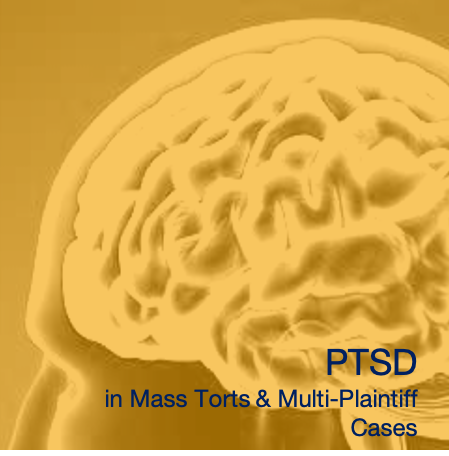Emerging Issues Facing the Property & Casualty Insurance Industry: What Has, What Is, What Will Be
Charlie Kingdollar was Emerging Issues Officer for GenRe where he worked for 40 years, much of which was spent monitoring hundreds of new risks at any given time. In this article, Charlie discusses risks that have long-since emerged but continue today, risks that are starting to reveal themselves, and risks just starting to appear on the horizon. Read or download his article published in the latest issue of the Journal on Emerging Issues in Litigation.
PFAS Contamination: Current Regulatory Landscape and Science
PFAS Contamination: Current Regulatory Landscape and Science Over the past 18 months, U.S. EPA and the Biden Administration have issued numerous new regulations of PFAS under CERCLA, the Clean Water Act, the Safe Drinking Water Act, the Toxic Substances Control Act, and other environmental statutes.In recent months, the U.S. EPA has issued significant new toxicity assessments and drinking water regulations for PFAS, including PFOA, PFOS, GenX, and PFBS. U.S. EPA also has taken steps to regulate PFOS and PFOA as hazardous substances under CERCLA. State regulators are also imposing new drinking water limits, cleanup standards, and testing requirements for PFAS. The U.S. EPA and a number of states are planning to issue numerous additional regulations of PFAS over the next few years.Listen as our authoritative panel examines the evolving federal and state regulatory landscape for PFAS. The group will discuss current scientific data on PFAS, including a review of the basis on which regulatory standards are developed, opportunities and challenges to determining the source of PFAS contamination (forensic analysis), business sectors, and regions where PFAS is or may soon be a regulatory focus, and new regulations and ongoing litigation.The panel will offer insight into the legal risks facing companies using and discharging PFAS in manufacturing, companies distributing or selling products containing PFAS, and companies and municipalities responding to PFAS contamination in groundwater, drinking water, and waste. Outline Regulatory developments EPA States Scientific developments Development of Safe Drinking Water Standards Implications of Drinking Water Standards PFAS in environmental media Epidemiology and toxicology Recorded on Tuesday, October 25, 2022 $297* This Strafford production has been specially selected for HB audiences. Russ Abell, PG, LSP Vice President Sanborn Head & Associates Jeff B. Kray Partner Marten Law Matt Thurlow Partner Baker & Hostetler Steven Zemba, Ph.D., P.E. Project Director Sanborn Head & Associates The panel will review these and other essential issues: What new federal regulation of PFAS is the EPA considering? What are recent state regulatory developments with PFAS? How does PFAS cycle through the environment? What [...]
Rule 23(c)(4) Issue Certification: Reconciling the Conflict With the Predominance Requirement
Rule 23(c)(4) Issue Certification: Reconciling the Conflict with the 23(b)(3) Predominance Requirement Proposed class actions seeking monetary damages are often difficult to certify because common issues do not predominate over individualized issues as required by Rule 23(b)(3). Rule 23(c)(4) provides that "[w]hen appropriate, an action may be brought or maintained as a class action with respect to particular issues."Although Rule 23(c)(4) has been part of the rule since the landmark 1966 amendments, it was often overlooked until the Supreme Court's decision in Wal-Mart v. Dukes. Plaintiffs now routinely seek limited issue certification for purported common issues, such as liability, arguing that questions of injury, reliance, or causation should be left for individual cases. When approved, this approach increases defendants' exposure by permitting certification in some cases that would otherwise fail the Rule 23(b)(3) standards.The federal circuits are now in a three-way split on how issue certification should be treated under Rule 23(b)(3)'s predominance requirement. While the Fifth Circuit has taken the textual view in Castano v. American Tobacco Co. that permits issue certification only if the class first qualifies under Rule 23(b)(3), the Ninth, Sixth, Second, and Seventh Circuits have adopted the opposite view that Rule 23(c)(4) certification does not require predominance. The Third Circuit has clarified and heightened the test in Russell v. Educ. Comm’n for Foreign Med. Graduates, 20-2128 (3d Cir. Sept. 24, 2021), but offers both sides plenty to consider. The remaining circuits are uncommitted, leaving the district courts to address the matter.Listen as our panel of experienced class action litigators analyzes the varying circuit court positions on Rule 23(c)(4) issue classes and the implications of practitioners' decisions when pursuing or opposing class certification. Outline The emergence of issue classes under Rule 23(c)(4) What is an issue class? How are they being strategically used? Where are the grey areas? Key court decisions on issue class certification Textual and historical analysis of Rule 23(c)(4) Strategies for defending the trial of "issue" classes Journal (JEIL): Artificial Intelligence Litigation Risks in the Employment Discrimination Context. By Gerald Maatman Jr., Alex Karasik, and George Schaller CLE [...]
Nursing Home Injury Litigation: Common Claims, Medical Records, and Damages Assessment
Nursing Home Injury Litigation: Common Claims, Medical Records and Damages Assessment Photo by Irwan iwe on Unsplash Counsel bringing nursing home injury claims must understand the statutory, regulatory, and established common law standards of care applicable to nursing home residents and governing patient care. The most common nursing home injuries--pressure sores, severe malnutrition or dehydration, physical and chemical restraints, elopement, falls, improper medication, and abuse--involve different approaches. Medical records, discovery, and damage assessment present unique challenges to counsel. Listen as our authoritative panel of practitioners provides an overview of nursing home laws and regulations, discusses common types of injuries, covers how to handle medical records and other discovery issues unique to these cases, and reviews how to assess damages. Subjects What are the key steps to develop a claim involving injury to a nursing home resident?What evidentiary and discovery challenges are present in nursing home injury claims–and how can counsel best address them?What is the role of pain and suffering claims in the assessment of damages? Outline Relevant laws and regulations Common types of injuries Discovery issues Reviewing medical records Assessing damages Corporate involvement Recorded: 10/18/2022 Regular price: $197* This Strafford production has been specially selected for HB audiences. Craig C. Conley Shareholder Baker Donelson Bearman Caldwell & Berkowitz Jaime Koziol Delaney Partner Levin & Perconti Mark E. Goodman Shareholder Capes Sokol Goodman & Sarachan Parke Morris Attorney Parke Morris Karie Valentino Partner Lewis Brisbois Bisgaard & Smith
Discovery on Discovery
Discovery on Discovery: Disputes About a Litigant's Efforts to Search for, Locate, Preserve, and Collect Responsive ESI Much is written about the expectation of cooperation between parties in litigation. And while cooperation is required in the discovery context, litigants have no transparency requirement on how they respond to discovery requests. Counsel should be vigilant in recognizing improper attempts by another party to extend the concept of discovery by demanding transparency.Most courts will not permit discovery on discovery in the absence of a showing that the responding party acted in bad faith or unlawfully withheld documents. Indeed, courts have routinely denied requests for discovery on discovery based on the requesting party's "mere speculation" that the responding party has acted improperly in responding to discovery.A requesting party may support a request for discovery on discovery by demonstrating an adequate factual basis, including inconsistencies with the responding party's production, deposition testimony establishing the failure of a party to implement a litigation hold promptly, and the absence of documents from key custodians and date ranges in a discovery production.Listen as this experienced panel of litigators addresses discovery on discovery and discusses how to prevent discovery on discovery from derailing the merits of the case, as well as the offensive use of discovery on discovery in potential motions for sanctions under Federal Rule of Civil Procedure 37(e) or state equivalents. Outline The challenges of seeking discovery on discovery Sedona Conference Principles 3 and 6 The presumption that the responding party is best situated to respond to discovery Judicial treatment of requests for discovery on discovery Baseline showings needed to pursue discovery on discovery Effective use of ESI protocols Objections to discovery on discovery Relevance/proportionality Privilege objections Potential waiver of privilege if privileged information produced Motions to compel Cooperation and attempts to meet and confer Establishing strong factual records Burden of proof Potential sanctions? Tuesday, January 24, 2023 1:00pm-2:30pm EST, 10:00am-11:30am PST $247* *Early Registration Discount Deadline Friday, January 6, 2023 This Strafford production has been specially selected for HB audiences. Travis A. [...]
Safeguarding Against Financial Exploitation
An on-demand CLE-eligible webinar Safeguarding Against Financial Exploitation America’s senior population is growing. Nearly one in five U.S. residents will be 65 or older in 2030. Which means the average age of U.S. investors is climbing too. With that comes the risk that they will be exploited by people with access – or gain access through nefarious methods – to their investment portfolio. Seniors and vulnerable persons lose billions of dollars each year. Remarkably, 90% of the people to take advantage of senior investors are members of their own family. Attorneys who represent senior clients need to know the signs of vulnerability, red flags that their clients are being exploited, what laws apply, and rules lawyers must follow in these matters. Questions our speakers answer: What is senior / vulnerable investor exploitation? Who is protected by state and federal laws? How prevalent is senior financial exploitation? What do the numbers tell us? What is the pace of financial abuse SAR filings by securities firms? What are the most popular scams? What is diminished capacity? What are the red flags indicating possible exploitation? What are the laws, rules, and regulations governing law firms? What are some best practices for law firms? How can firms best protect their senior clients? On Demand CLE Webinar What You Get PowerPoint and supplemental materials. Complete recording for later review. Answers to your questions via email. Invitation to contact speakers. 1.5 CLE credits (for licensed attorneys). CLE assistance.* *Subject to state bar rules. For licensed attorneys. Register Meet the Speakers Joseph Calabrese Bressler, Amery & Ross, P.C. A 1991 Graduate of St. John’s University Law School, Mr. Calabrese brings 30 years of practice and 18 years of Securities Litigation/Regulatory experience to his role as principal in the New York office of Bressler, Amery & Ross’s Financial Institutions Group. He began his career as a Wall Street litigator as an associate general counsel for Citigroup’s Smith Barney and [...]
PTSD in Mass Torts & Multi-Plaintiff Cases. What attorneys need to know.
PTSD in mass tort and multi-plaintiff cases. What attorneys need to know. Mass tort claims arise most frequently in man-made and natural disaster catastrophe litigation as well as personal injury, employment, product liability and toxic tort litigation. Frequently, these lawsuits include either primary or secondary allegations of emotional distress. PTSD is one of the most common emotional distress claims alleged within mass tort litigation, as well as allegations of depression and emotional stress (anxiety). Join an experienced psychiatrist and psychologist who will cover topics relevant to the forensic psychiatric assessment of emotional damages within mass tort and complex litigation. Agenda Introduction: Defining PTSD. What it is and what it is not. The methodological approach to assessing allegations of emotional distress in mass tort & complex litigation. The importance and the methodology of psychological testing as part of the assessment of emotional distress claims in mass tort litigation. Claimant population screening. Using psychological test instruments to differentiate claimants who require in-depth forensic psychiatric assessment from claimants who do not. Are all psych tests the same? Types of psychological test instruments we recommend and ones that we do not — and why. So-called “PTSD Tests.” Do they have a role in forensic psychological assessments? Accuracy and reliability of conclusions derived from psychological test data. Taking a “team approach” to emotional distress claim assessment in mass tort litigation. On Demand Registration Webinar On Demand 75 minutes of insights from experienced professionals. CLE credit: 1+ (subject to bar rules). CLE support by email. The complete Power Point presentation. Continued access to the complete recording for later use. Answers to speaker questions by email. On Demand Registration Meet the speakers. Mark I. Levy MD, DLFAPA Medical Director Forensic Psychiatric Associates Medical Corporation Associate Clinical Professor, Psychiatry University of California, San Francisco, School of Medicine 415.388.8040 mlevy@fpamed.com Dr. Levy attended Durham University, U.K. (1965-66) and is a graduate of Columbia College (A.B. 1967), the Columbia University College of Physicians and Surgeons (M.D. [...]

